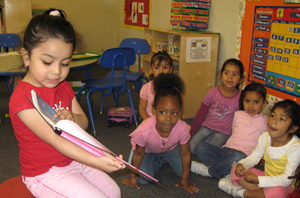Only slightly more than one-third of Latino children in the state of Illinois attend preschool, putting them behind in preparedness compared to their white and black counterparts, according to a new study.
By the time they enter kindergarten, the average Illinois Latino child enters kindergarten five months behind whites and about three or four months behind blacks in being prepared for school, says Bruce Fuller, author of the study and director of the Institute of Human Development at the University of California-Berkeley.
There are a number of reasons the Latino preschool rate in Illinois is far below the national average of 48 percent, according to Fuller.
For one, Illinois Latino communities have been slower to push preschool than other groups instead relying on family members to take care of young children.
“The tradition is not to send your child to a preschool. It’s to rely on grandparents or an aunt who lives around the corner,” Fuller said speaking of first-generation Latinos.
Other reasons include that parents are simply not aware that the option exists and that bilingual classes are available.
“I think sometimes the parents don’t even know that this option exists,” Joana Rojas, whose 3-year-old daughter is in preschool, said. “Some of my friends that I talked to didn’t even know that their kids could go to school early.”
The West Aurora School District now offers six bilingual sections in the preschool program up from zero just two years ago, but many parents are still unaware of this.
“They don’t know that they have bilingual classrooms,” Norma Piza, who has had three children attend preschool in a neighboring district, said. “If there’s no one there to tell you exactly how it works, you don’t know. Also, we have to work, and finding travel arrangements is difficult.”
Illinois became the first state to require school districts to offer native-language preschool in schools with at least 20 preschoolers who speak the same language, other than English, by law.
The study was funded by the McCormick Foundation.
“Perhaps if a higher percentage of students enter kindergarten adequately prepared to learn, a higher percentage of students would graduate from high school well prepared for college and the work force,” West Aurora spokesman Mike Chapin said.
As the district prepares for next year, it’s goal is to hire additional bilingual staff members so that more preschool students can be served in their native language, says Michelle Shabaker, director of the Todd Early Childhood Center.


Recent Comments